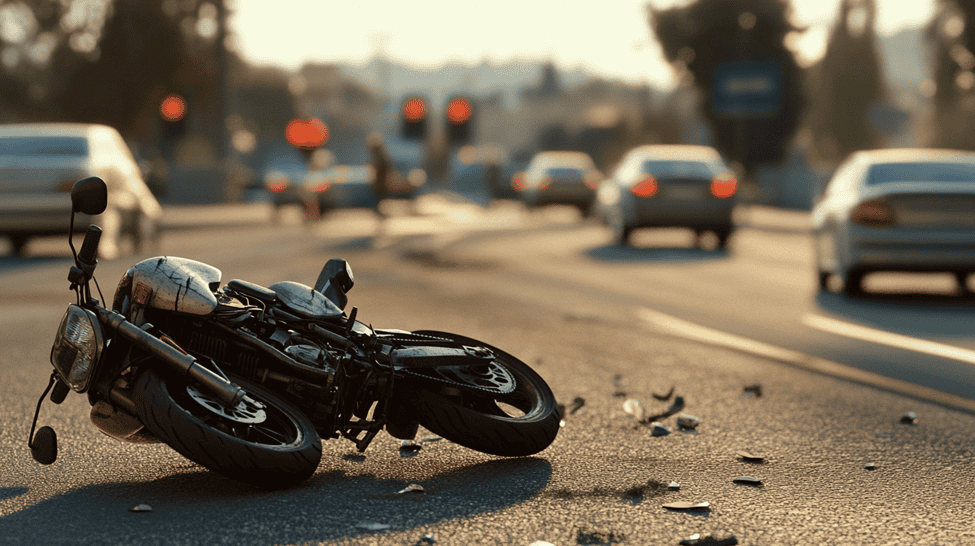8730 Wilshire Boulevard, California 90211
Get Help Now
8730 Wilshire Boulevard, California 90211
Get Help Now

Driver error causes over 90 percent of the motorcycle wrecks in California. However, there is a difference between driver error and negligence. An error is a fact determination that involves a mistake, like speeding or driving drunk. Negligence is a legal determination that involves not only the driver’s mistake, but also any applicable insurance company defenses. Pretty much every motorcycle wreck claim in SoCal involves at least one of the five defenses discussed below.
Therefore, even if the other driver was at fault for a crash, the victim is not automatically entitled to compensation. A Los Angeles personal injury attorney must establish fault and refute insurance company defenses. Preparation is normally the key to success in these situations. Usually, people who do their homework do well on the tests. So, attorneys who diligently collect evidence and properly evaluate claims usually obtain maximum compensation for accident victims.
Unlike the other defenses in this post, the motorcycle prejudice is not found in law books. But it’s probably the most common defense in motorcycle wreck claims. Sometimes, it’s a standalone defense designed to erode sympathy for the victim. More commonly, the motorcycle prejudice makes jurors more willing to embrace comparative fault and other defenses.
Although the motorcycle prejudice is not as strong as it was forty or fifty years ago, many people still associate motorcycle riders with images like this one.
Frequently, the best way to approach juror prejudice is not to refute the prejudice itself. Rather, attorneys separate individuals from groups. Generally, it’s very easy to hate a group, like motorcyclists, Jews, or Republicans. But it’s very difficult to hate an individual, like Fred, David, or Jane.
Contributory negligence is probably the most common formal defense in motorcycle crash and other vehicle collision claims. This doctrine shifts accident blame from the at-fault driver to the victim.
For example, an insurance company might admit that its driver turned illegally and blame the wreck on the motorcycle rider’s excessive speed. The insurance company has both the burden of proof and burden of persuasion in this and other affirmative defenses. Lawyers must convince judges that the defense applies. Then, they must make a similar sales pitch to jurors.
California is a pure comparative fault state. Even if the victim was 99 percent responsible for the wreck, the victim is still entitled to a proportionate share of damages.
These damages usually include compensation for economic losses, such as medical bills, and noneconomic losses, such as pain and suffering.
Comparative fault laws vary in different states, and so does the helmet defense. California is a two-tone state in this area. It has one of the only universal helmet laws in the country, and one of the weakest helmet defense laws in the country.
Anyone on an open motorized vehicle, like a motorcycle, moped, electric scooter, or ATV, must wear a helmet. However, in civil court, the failure to wear a helmet is usually only relevant to the amount of compensation, as mentioned above.
Once again, this defense is a two-step process. Insurance company lawyers must convince judges that the victim wasn’t wearing a helmet. Then, lawyers must convince jurors that the failure to wear a helmet, as opposed to the other driver’s negligence, substantially caused the victim’s injuries.
This defense often comes up in SMIDSY (Sorry, Mate, I Didn’t See You) wrecks. A vehicle operator waiting to make a left turn against traffic doesn’t see an approaching motorcycle and turns into the rider’s path.
Insurance company lawyers often argue that riders could have avoided these wrecks, perhaps by quickly changing lanes or speeds. Their failure to do so means they are legally responsible for the wreck, under the last clear chance rule.
This defense usually doesn’t apply. It’s almost impossible to suddenly change speeds or lanes on a motorcycle without losing control of the vehicle.
This legal defense is basically last clear chance’s cousin. A driver, who was normally not paying much attention to the road to begin with, claims that the rider “came out of nowhere” and that a collision was unavoidable. Sudden emergency is especially common in right-turn and lane-change accidents.
Legally, this defense only applies if a driver reasonably reacts to a sudden emergency. In this context, a “sudden emergency” is usually something like a hood fly-up, a lightning strike, or another completely unexpected event. Even a motorcyclist who is lane-splitting or riding erratically does not belong in this category.
Insurance companies do whatever it takes to reduce or deny compensation for victims. For a free consultation with an experienced personal injury attorney in Los Angeles, contact the Law Offices of Eslamboly Hakim.
Photo Credit: Storyblocks
Tag: